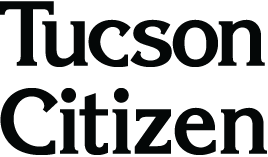La Casa Cordova will reopen to public about December

Josh Tellez of D. Tellez Masonry finishes some adobe work on an outhouse at La Casa Cordova, 173 N. Meyer Ave., on Tuesday morning. The building complex, one of the oldest in Tucson, is being renovated.
The wood viga and saguaro lath ceilings at the historic La Casa Cordova, 173 N. Meyer Ave., will be visible for the first time in more than 30 years when the second-oldest known building in Tucson reopens to the public, likely in December.
La Casa Cordova, built some time before the first Tucson map was drawn in 1862, was closed in June to replace electrical systems, upgrade drainage and make the adobe structure more accessible to the disabled, said Meredith Hayes, spokeswoman for the Tucson Museum of Art and Historic Block, which manages the house.
Since Labor Day, a 10- to 14-foot-wide brick walkway has been installed in the courtyard so those in wheelchairs will no longer have to roll through dirt to get to the seven rooms in the L-shaped structure. The bricks cover about one-fourth of the dirt courtyard, and a new rock water catch basin fills one corner in the courtyard.
Inside, a false ceiling has been removed to reveal the original viga-and-lath ceiling from which track lighting will be suspended as a new electrical and lighting system is installed, said Bob Vint, a downtown architect who specializes in historic preservation.
“It was really inadequate,” Vint said. “They did it on a shoestring in the 1970s. They had stuff like extension cords plugged into extension cords.”
Outside, Vint is rearranging the roof drainage to match downtown photos from the late 1800s. At that time, roofs were drained through canales, where a sloping pipe drained into each vertical pipe, which allowed the roof to be drained with half as many ground outlets.
This replaces a 1970s concept, where a vertical pipe led down from every other roof outlet but water from the pipeless outlets simply poured onto the ground and puddled against the shaded wall. This causes water to undermine the adobe, Vint said.
La Casa Cordova is part of the art museum’s historic block, which incudes the Stevens House, the Nye Fish House, the Corbett House and the Romero House. Casa Cordova sits where Telles Street dead-ends into Meyer, just northwest of the main Tucson Museum of Art building.
The oldest two rooms at La Casa Cordova were built as early as 1848, based on research done for the application to put the house on the National Register of Historic Places. That would make it the second-oldest acknowledged and identifiable building still standing in Tucson, said Brooks Jeffery, associate dean of the University of Arizona College of Architecture and Landscape Architecture.
“Some of these buildings (in downtown) are built on top of other buildings,” Jeffery said in explaining how bits and pieces of some downtown buildings may be older.
The only older building fully identified is the Charles O. Brown House, 40 E. Broadway, where the rear rooms along Jackson Street date to 1840, Jeffery said.
The $127,000 project is funded with a $61,000 city Back to Basics grant; $51,000 from the Arizona State Parks Heritage Fund; $12,000 from the Southwestern Foundation for Education and Historical Preservation; and $3,000 from the DeGrazia Foundation.
The house’s link to the Cordova name stems from 1896 when Severin Rambauld bought the house. His wife, Refugio, was the great aunt of Maria Cordova, whose son Arturo inherited the house in 1936. The Cordova family lived there until 1973, the year following the city acquiring it by condemnation in 1972 through the still-controversial 1968 urban redevelopment program that demolished the barrio where the Tucson Convention Center stands.
The city leased La Casa Cordova to the art museum in 1973.

LEFT and RIGHT: Eddie Tellez Jr. of D. Tellez Masonry uses adobe bricks to cap walls on the roof of La Casa Cordova.



